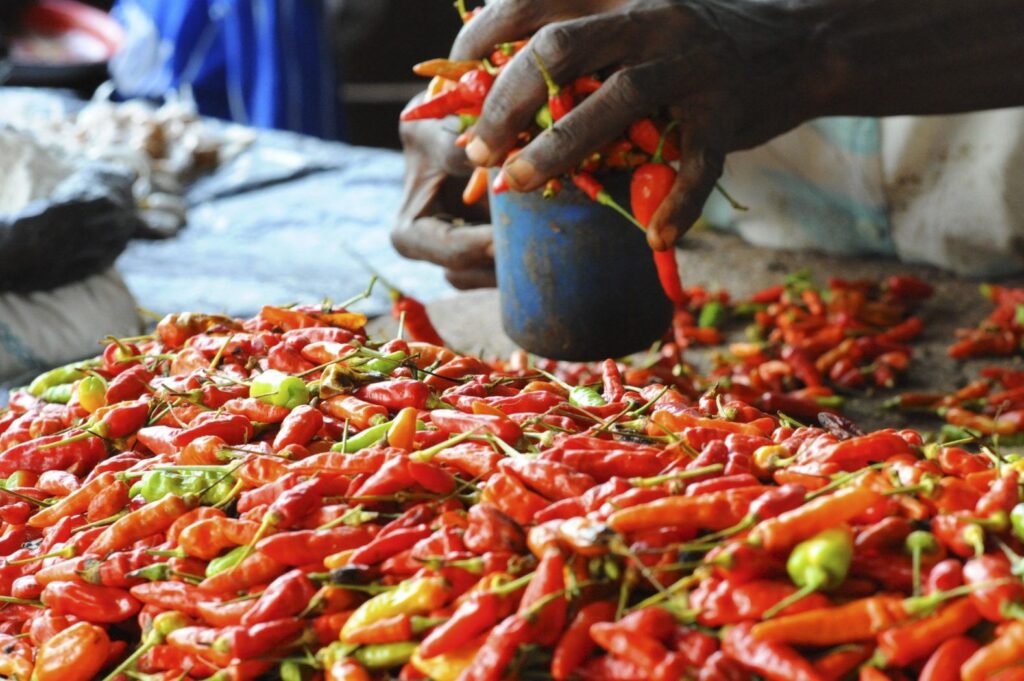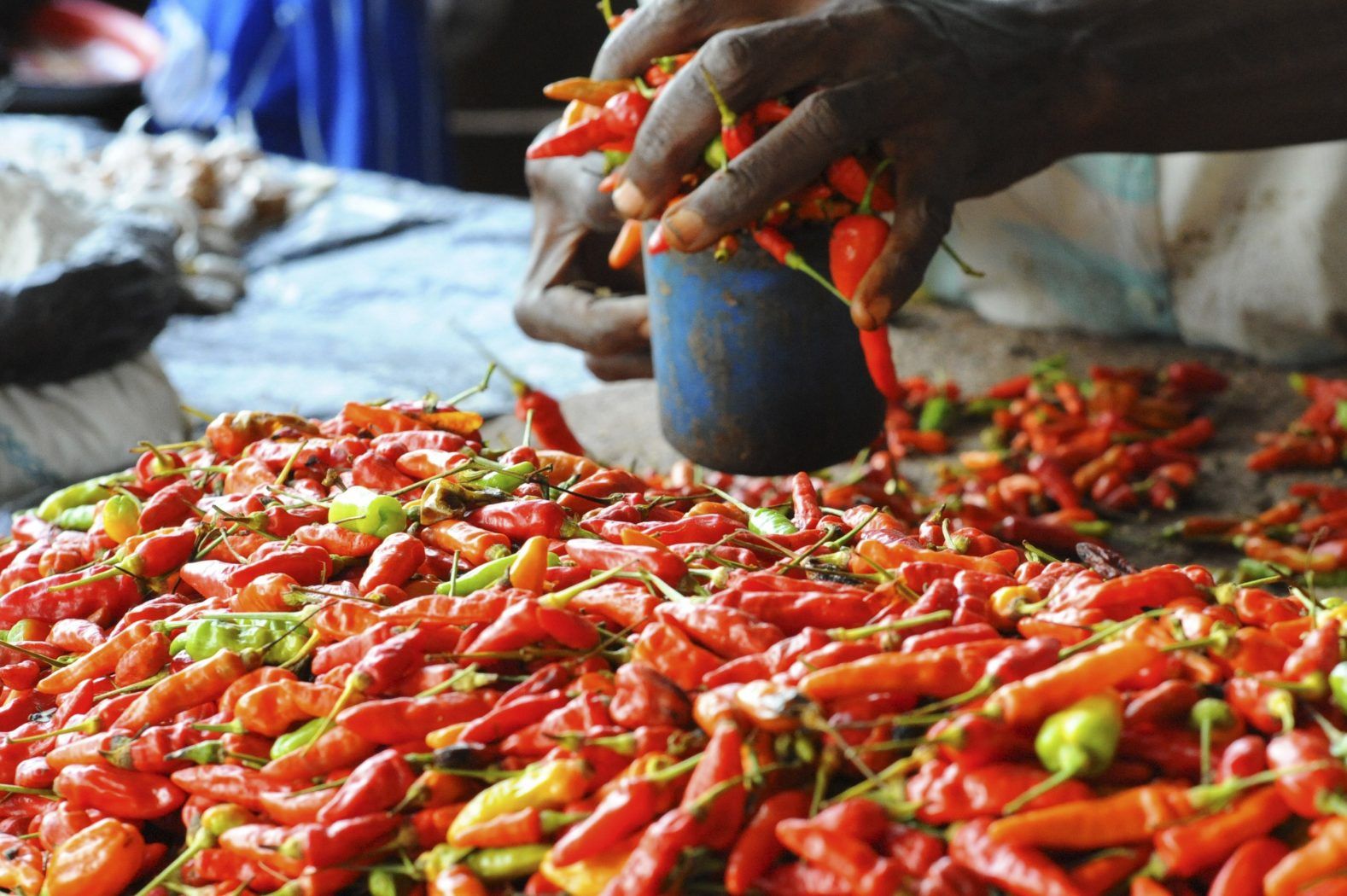
A Culinary Journey Through Sierra Leone: Exploring the Heart of Sierra Leone Foods
Sierra Leone, a West African nation with a vibrant history and culture, offers a diverse and flavorful culinary landscape. Sierra Leone foods are a testament to the country’s rich agricultural heritage, its coastal location, and the influences of various ethnic groups and historical interactions. From hearty stews to fresh seafood and unique side dishes, exploring Sierra Leone foods is an adventure for the palate. This article will delve into the essential elements of Sierra Leone foods, highlighting popular dishes, ingredients, and the cultural significance behind them.
The Foundation of Sierra Leone Foods: Staples and Ingredients
The foundation of Sierra Leone foods relies heavily on locally grown staples. Rice, especially rice, is paramount. It serves as a base for many meals and is often enjoyed with various sauces and stews. Cassava, also known as yuca, is another essential ingredient, used in various forms, from fufu to cassava leaves cooked as a vegetable. Other important staples include sweet potatoes, plantains, and corn.
- Rice: A cornerstone of the Sierra Leone foods diet, often served steamed or as part of a one-pot dish.
- Cassava: Used in various forms, including fufu (a dough-like staple) and cooked cassava leaves.
- Sweet Potatoes and Plantains: Boiled, fried, or roasted, these provide a sweet and savory element to meals.
- Corn: Often ground into flour and used in porridge or bread.
The abundance of fresh produce also plays a critical role. Common vegetables include okra, eggplant, tomatoes, onions, peppers (especially scotch bonnets for that signature West African heat), and leafy greens like spinach and bitter leaf. These ingredients are used to create flavorful sauces and stews that complement the staple carbohydrates.
Signature Dishes: A Taste of Sierra Leone Foods
Several dishes stand out as representative of Sierra Leone foods. These dishes showcase the country’s unique flavors and cooking techniques.
Groundnut Stew (Peanut Stew)
Groundnut stew, also known as peanut stew, is a beloved dish throughout West Africa, and Sierra Leone’s version is particularly flavorful. It typically consists of chicken, beef, or fish cooked in a rich, creamy sauce made from groundnuts (peanuts), tomatoes, onions, peppers, and various spices. The stew is often served with rice or fufu.
Cassava Leaf Stew (Plasas)
Cassava leaf stew, or Plasas, is a national dish and a staple in Sierra Leone foods. It is made from tender cassava leaves, which are pounded or ground and then cooked with meat (often beef or smoked fish), palm oil, onions, peppers, and other seasonings. The stew has a slightly bitter and earthy flavor and is typically served with rice. Different variations exist, with some including additions like egusi (melon seeds) for added richness.
Pepper Soup
Pepper soup is a spicy and flavorful broth that is popular throughout West Africa. In Sierra Leone, it is often made with goat meat, chicken, or fish and is seasoned with a generous amount of peppers, ginger, garlic, and other spices. Pepper soup is not only enjoyed as a meal but is also believed to have medicinal properties, helping to clear sinuses and soothe colds.
Jollof Rice
While Jollof rice is a popular dish across West Africa, each country has its own unique take on it. Sierra Leone’s Jollof rice is typically made with rice cooked in a tomato-based sauce with onions, peppers, spices, and meat or fish. The key to a good Jollof rice is achieving the perfect balance of flavors and ensuring that the rice is cooked to a slightly smoky, reddish-orange perfection. It is a common feature at parties and celebrations.
Fried Fish and Plantains
Given Sierra Leone’s coastal location, fresh seafood is readily available. Fried fish, often seasoned with local spices, is a popular dish, especially when paired with fried plantains. The sweetness of the plantains complements the savory fish, creating a satisfying and flavorful meal. This is a common street food item and a popular choice for a quick and tasty lunch or dinner.
The Cultural Significance of Sierra Leone Foods
Sierra Leone foods are more than just sustenance; they are deeply intertwined with the country’s culture and traditions. Food plays a central role in social gatherings, celebrations, and ceremonies. Sharing a meal is a sign of hospitality and friendship. Certain dishes are traditionally prepared for specific occasions, such as weddings, funerals, and religious holidays.
The preparation of Sierra Leone foods is often a communal activity, with family members working together to prepare ingredients and cook the meal. This shared experience strengthens family bonds and reinforces cultural traditions. Traditional cooking methods, such as using wood fires and clay pots, are still prevalent in many rural areas, adding to the authenticity and flavor of the dishes.
The Influence of History on Sierra Leone Foods
The history of Sierra Leone has significantly influenced its culinary landscape. The country’s location on the coast of West Africa has made it a hub for trade and cultural exchange for centuries. European traders, particularly the Portuguese and British, introduced new ingredients and cooking techniques that have been incorporated into Sierra Leone foods. The arrival of enslaved Africans from various regions of the continent also contributed to the diversity of the country’s cuisine.
The transatlantic slave trade had a profound impact on Sierra Leone’s population and culture. Many of the enslaved Africans who were freed and returned to Sierra Leone brought with them their culinary traditions, which blended with the existing local cuisine. This fusion of flavors and techniques has resulted in a unique and distinctive culinary heritage.
Modern Trends in Sierra Leone Foods
While traditional Sierra Leone foods remain popular, there is also a growing interest in modernizing and innovating the country’s cuisine. Chefs and food entrepreneurs are experimenting with new ingredients and techniques to create contemporary versions of classic dishes. There is also a growing awareness of the importance of sustainable and locally sourced ingredients.
The rise of social media and online food platforms has also played a role in promoting Sierra Leone foods to a wider audience. Food bloggers and influencers are sharing recipes and stories about Sierra Leonean cuisine, helping to raise awareness and appreciation for the country’s culinary heritage. This increased visibility is also attracting tourists and food enthusiasts who are eager to experience the authentic flavors of Sierra Leone.
Where to Experience Authentic Sierra Leone Foods
To truly experience the heart of Sierra Leone foods, one must venture beyond the tourist hotspots and explore the local markets and restaurants. Freetown, the capital city, offers a wide range of dining options, from upscale restaurants serving international cuisine to small, family-run eateries specializing in traditional dishes. [See also: Best Restaurants in Freetown]
Visiting local markets is also a great way to discover the ingredients and flavors of Sierra Leonean cuisine. The bustling markets are filled with fresh produce, spices, and other local delicacies. Interacting with the vendors and learning about the different ingredients can provide a deeper understanding of the country’s culinary heritage. [See also: Exploring Freetown Markets]
For a more immersive experience, consider taking a cooking class or joining a food tour. These activities offer the opportunity to learn about traditional cooking techniques and sample a variety of dishes while interacting with local chefs and food experts. [See also: Sierra Leone Cooking Classes]
The Future of Sierra Leone Foods
The future of Sierra Leone foods looks promising. With a growing interest in sustainable agriculture, local food production, and culinary innovation, the country’s cuisine is poised to thrive. As more people discover the unique flavors and cultural significance of Sierra Leone foods, it is likely to gain recognition and appreciation on a global scale. By preserving traditional cooking methods, promoting local ingredients, and embracing innovation, Sierra Leone can ensure that its culinary heritage continues to flourish for generations to come.
In conclusion, Sierra Leone foods are a rich and diverse reflection of the country’s history, culture, and natural resources. From the hearty stews and flavorful sauces to the fresh seafood and unique side dishes, exploring Sierra Leone foods is a culinary adventure that offers a taste of West Africa’s vibrant spirit. As the country continues to develop and modernize, its culinary heritage remains a vital part of its identity, connecting people to their roots and providing a delicious taste of home.

